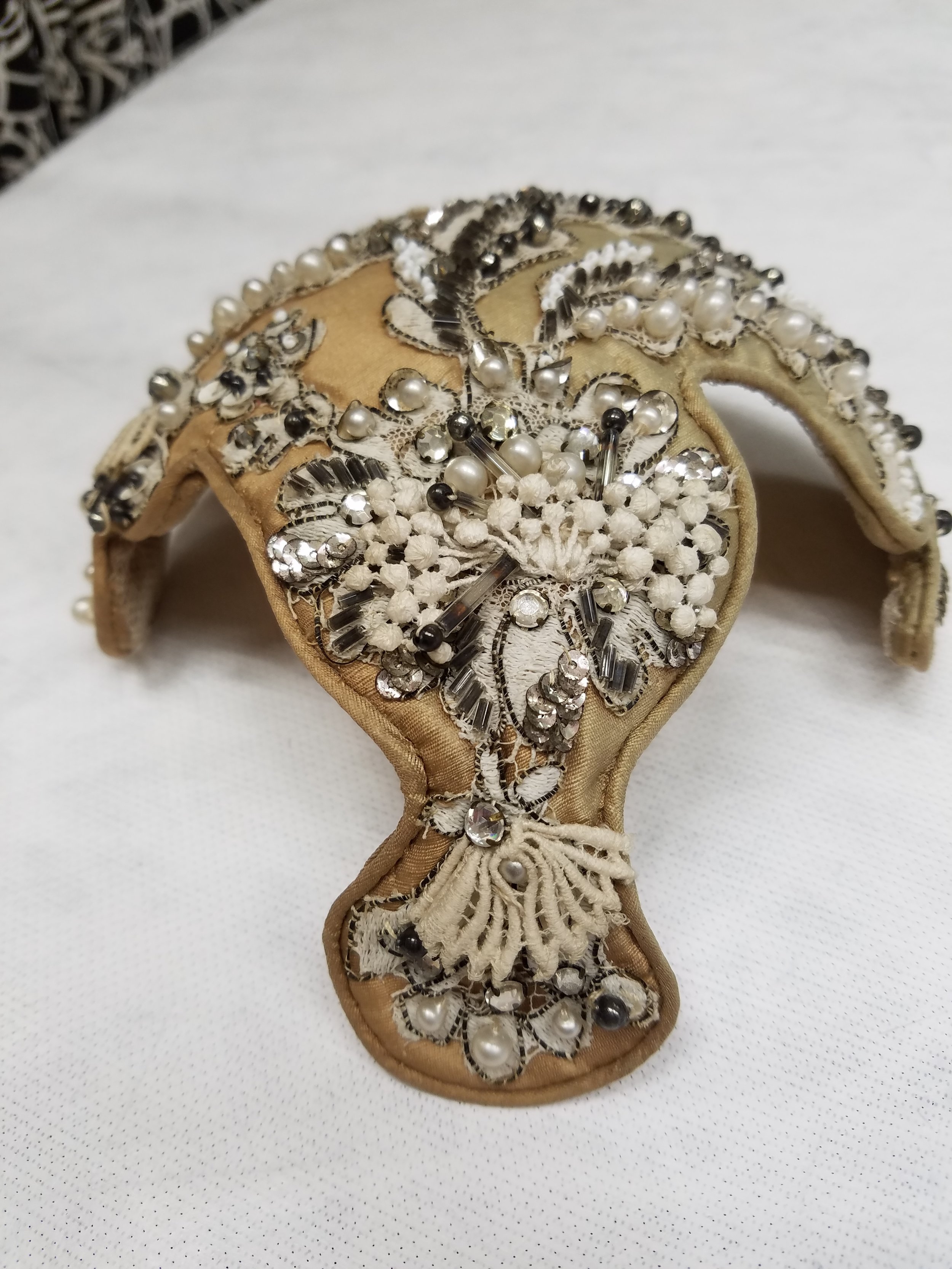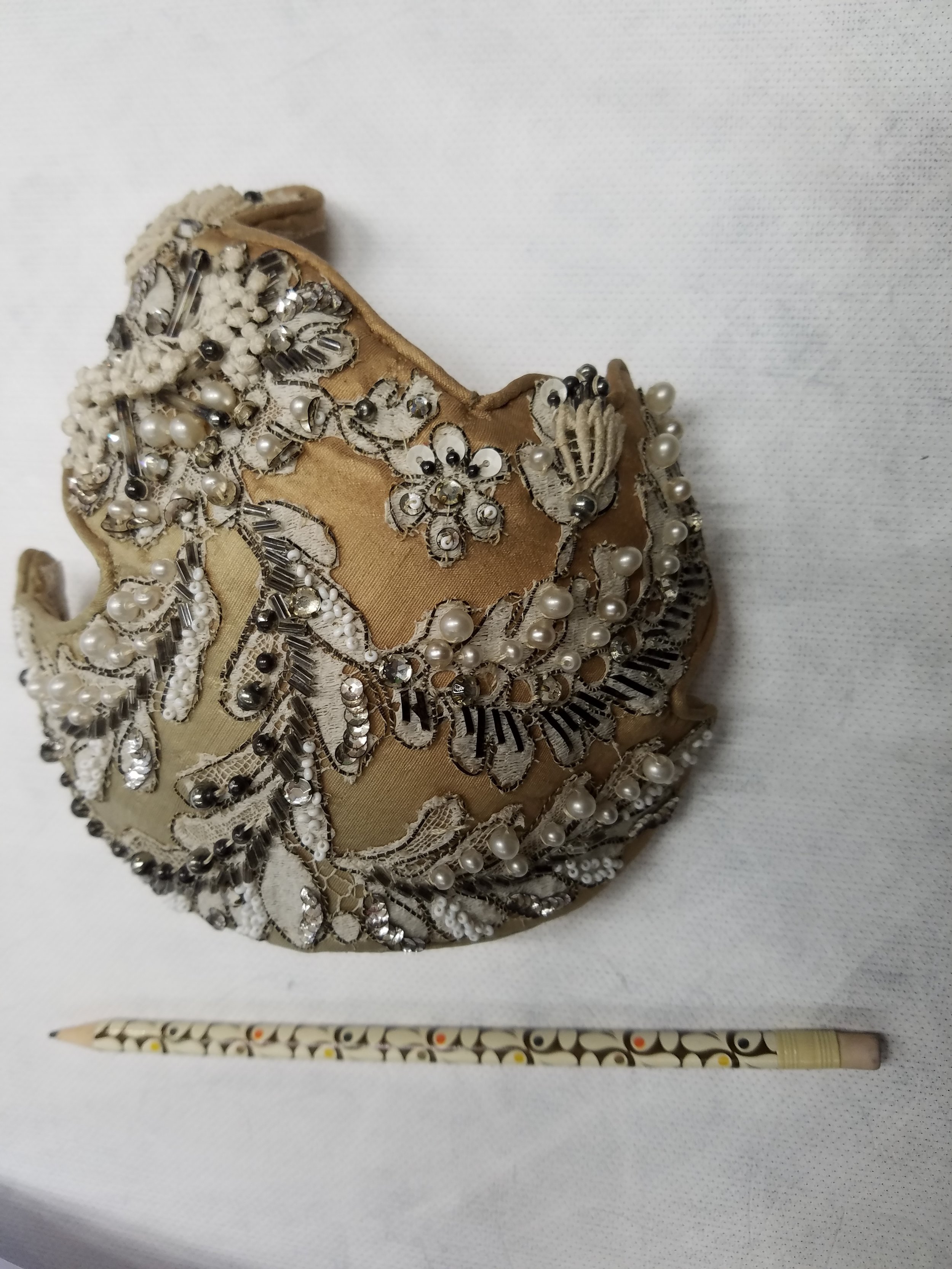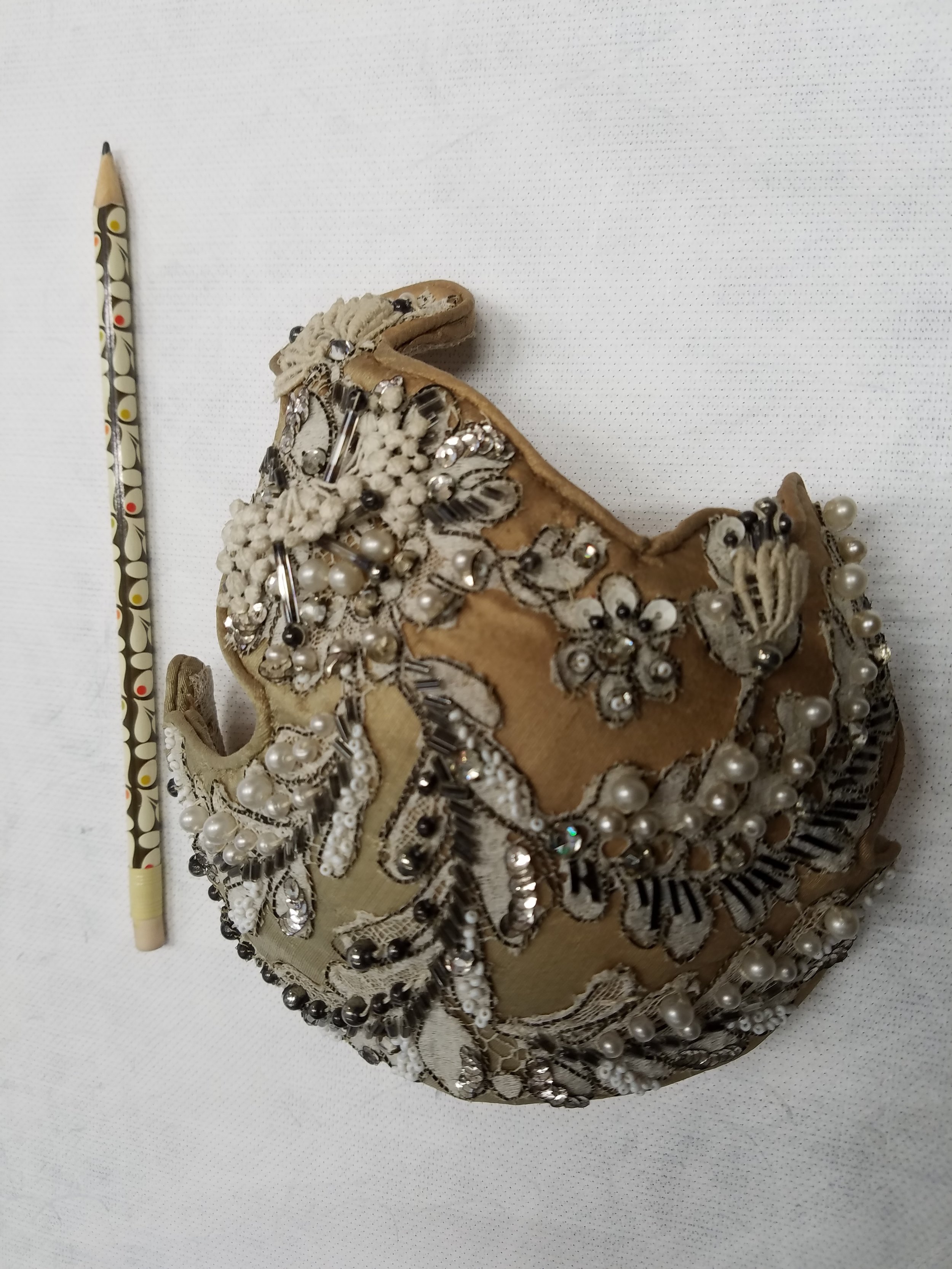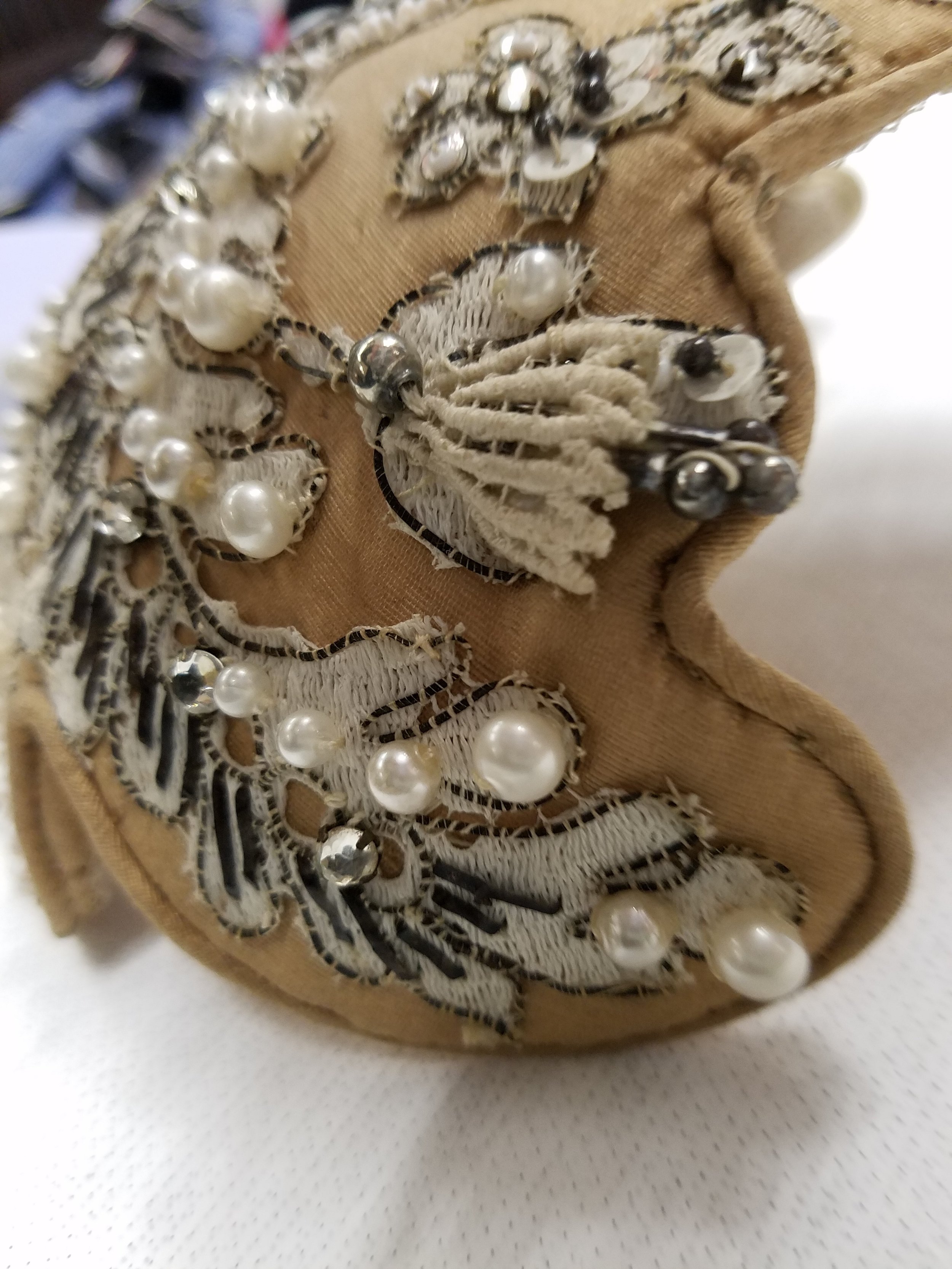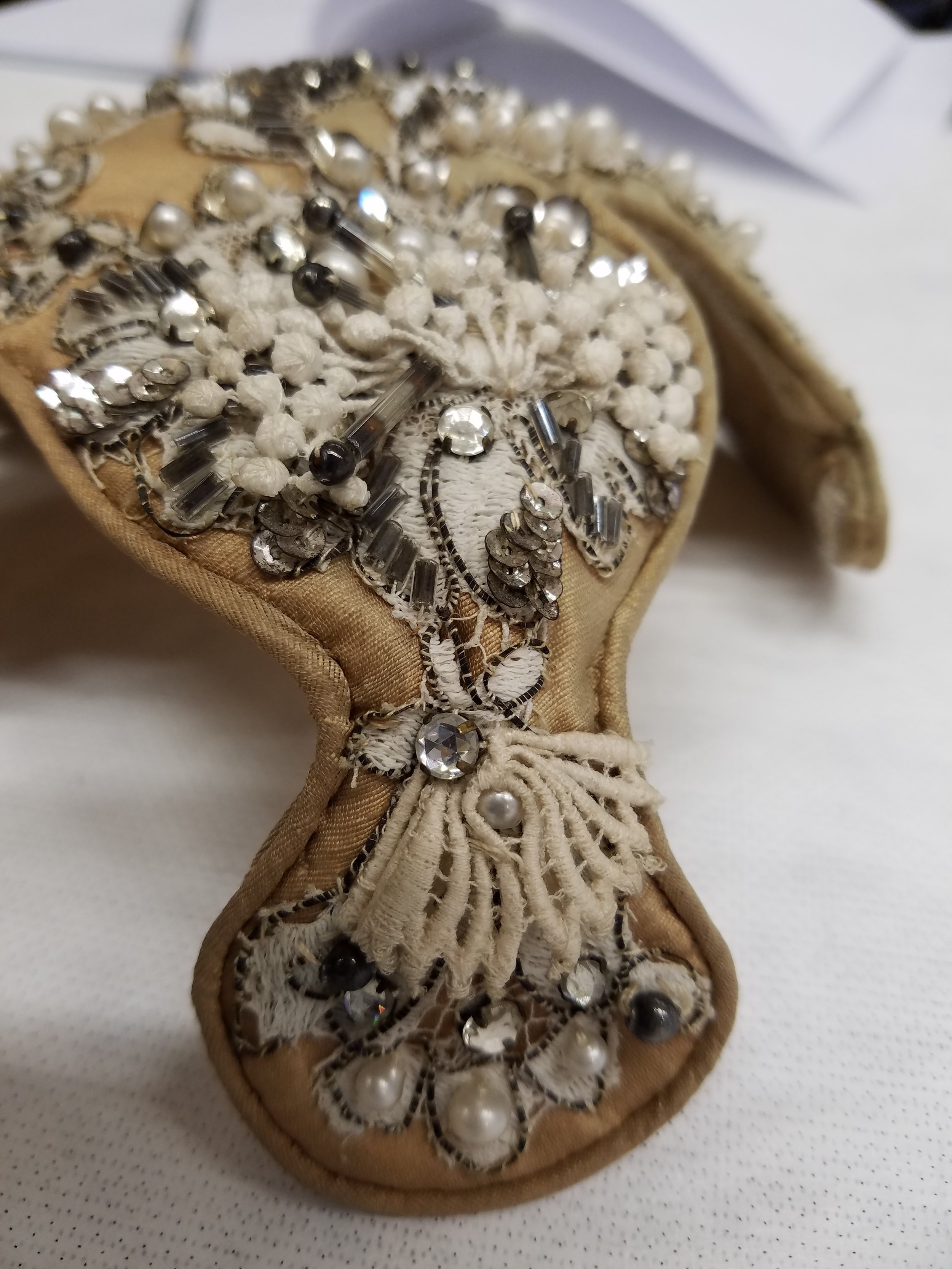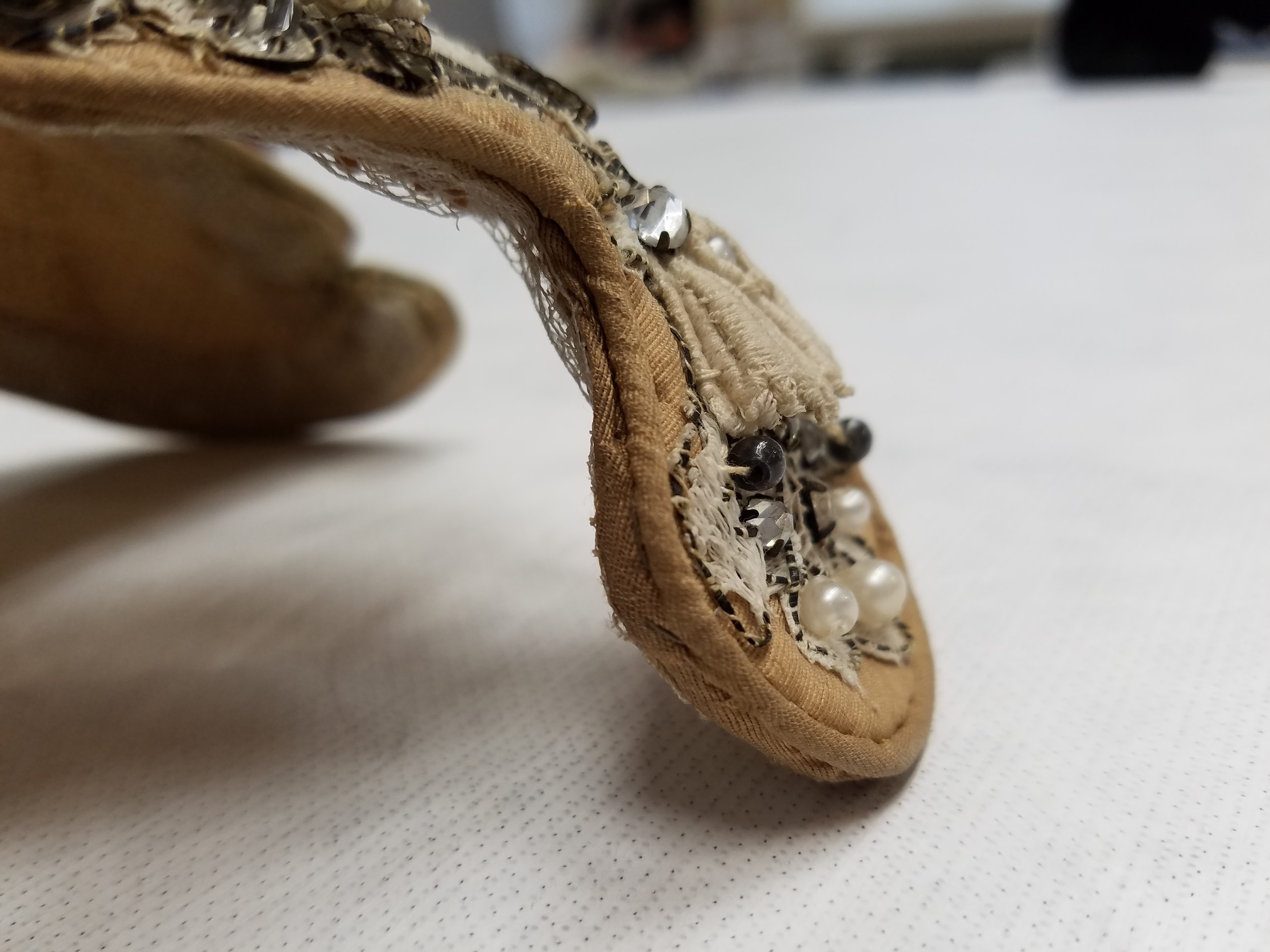The more I learn about making women’s hats, the clearer my realization that it is an ancient art with societal meanings in the creation and the wearing of hats. Each milliner I meet, speak with, and work with has a different store of knowledge and experience to share, and the number of books available is staggering!
I had been content just learning techniques from others, finding a hat style I like at a royal wedding, in a photo, a movie, or Downton Abbey, and stretching to find the necessary techniques from experimentation or more experienced milliners.
Then, a friend and I decided to go to London for the Seahawks football game at Wembley Stadium in October of 2018. London! Hat Central!
I had recently met, taken classes from, and thoroughly enjoyed London Milliner Tina Giuntini of Bea & Evie. So, I emailed Tina that I would be in London, and hoped we would have time to meet. Well, she was not only willing, but requested a research appointment at the Victoria & Albert’s Clothing archives in preparation for “Millinery Through the Decades” classes which she and London Milliner Judy Bentinck had been planning. Just days before my departure, Tina let me know that the appointment had been awarded, and it was on my arrival date, in the afternoon.
Thursday, 11 October, 2018 - Arrived London-Gatwick, and, just hours later, met Tina for the research appointment, which was at the Victoria & Albert Museum's Blythe House Clothing archives. Tina had chosen a group of vintage hats when she requested the appointment, and assigned me to be her intern for this research. As we examined each hat, Tina asked me to make detailed photographic images, which I did, and we both took notes. The examinations were limited to looking closely but never touching, and when we were ready to see other angles, we asked the archives monitor to move the hat. We had a total of two hours to look at all the hats.
This is one of six pieces we examined, and was listed as circa 1950’s. It features silk twill fabric onto which a lace and beads embroidered piece was sewn. the embroidered piece appears to have determined the size (approx 7” front to back and 8” side to side) and amorphous shape of the headpiece
Examination of the underside of the headpiece shows that the foundation was of willow, which is no longer commonly available in the UK or the US. Willow is lightweight and flexible, so is an ideal material for this type of headpiece. It is apparent that a batting of some kind was used between the foundation and the crown covering. The shaping of the crown is supported by millinery wire which appears to be bound in place by a bias strip of the cover fabric sewn to be a sort of piped or welted edge. The only lining is tulle netting on the complete underside, through which hairpins may be used to secure the piece in the wearer’s hair. A comb and a label (Simone Mirman) had been sewn in place, answering the question of which was the front of the piece. This headpiece was likely one of a kind, based on the uniqueness of the embroidered lace applied to the crown.
I was fascinated by this headpiece. It was well-worn, and I wondered about not only the events it has seen, but from what kind of garment the extravagant lace piece came. I love the three dimensional nature of the beads and lace - it gave me a crazy impulse to try to make my own bit of lace and bead scrap for a hat. I didn’t do that, but I’ll share what I did do in my next post.

